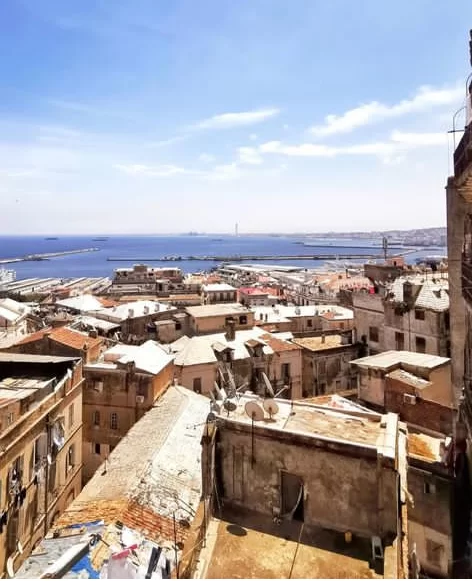Algeria is a country that has much to offer to visitors. From its ancient Roman ruins to its stunning coastline, there are many places to see and things to do in this North African country. Here are the top 20 places to see in Algeria that will leave you mesmerized.
Recommended reading…. Algeria Travel Requirements: All You Need To Know
- The Old Kasbah of Algiers
The Old Kasbah of Algiers, also known as Casbah of Algiers, is a historic fortress and UNESCO World Heritage site located in the heart of Algiers, the capital of Algeria. It is a maze-like complex of narrow streets, alleys, and buildings that date back to the Ottoman era.
The Kasbah is an essential cultural and historical landmark of Algeria and is a must-see destination for anyone visiting the country. It is a living testament to Algeria’s long and rich history, and its unique architecture, culture, and way of life.
2. Cathedral of Our Lady of Africa
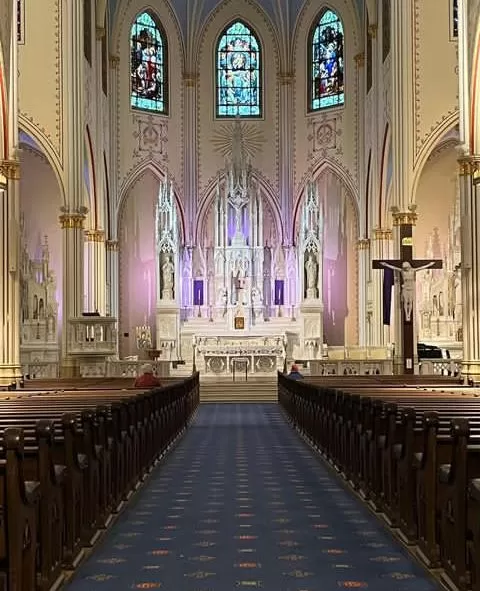
The Cathedral of Our Lady of Africa is a stunning Roman Catholic church located in Algiers, the capital of Algeria. It is a prominent landmark and an essential part of the city’s architectural and cultural heritage. The cathedral was built in 1872 by French architect Jean-Eugène Fromageau and is one of the most significant religious buildings in Algeria.
The cathedral’s architecture is a blend of various styles, including Roman, Byzantine, and Moorish. Its unique design features a blend of red and white bricks, intricate stone carvings, and stained glass windows, which give the church a breathtaking appearance. The cathedral’s interior is equally impressive, with marble columns, ornate altars, and beautifully crafted wooden pews.
The Cathedral of Our Lady of Africa has played a significant role in the religious and cultural history of Algeria. It is a symbol of the country’s colonial past and the enduring presence of Catholicism in Algeria. Today, the cathedral continues to serve as a place of worship for the Catholic community in Algiers, and its impressive architecture and historical significance make it a popular tourist attraction.
3. City of Constantine
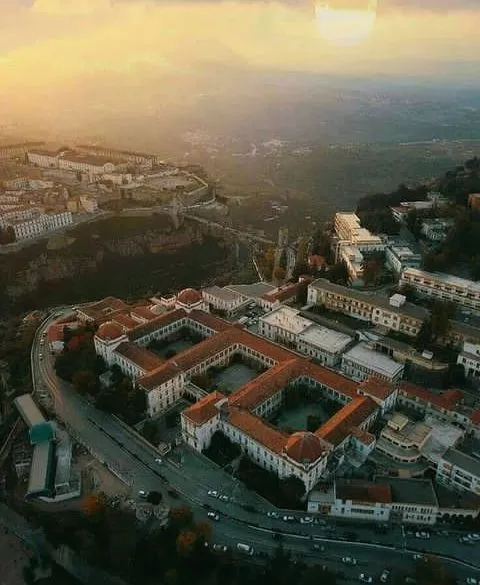
The city of Constantine is a remarkable destination located in the northeast region of Algeria. Founded by the Phoenicians in the 3rd century BC, it is one of the oldest continuously inhabited cities in the world. It is situated on a rocky plateau and is surrounded by deep gorges and scenic valleys, which make it a unique and breathtaking destination.
Constantine is famous for its fascinating history and rich cultural heritage. It has been inhabited by various civilizations, including the Carthaginians, Romans, and Arabs, which have all left their mark on the city’s architecture and culture. The city is home to many historical landmarks, including the Palace of Ahmed Bey, the Emir Abdelkader Mosque, and the Roman Theater.
One of the most impressive features of Constantine is its architecture. The city is famous for its stunning bridges, which span the deep gorges that surround the city. The most famous of these is the Sidi M’Cid Bridge, which is over 100 meters long and was built in the 20th century. The city is also famous for its Ottoman-style houses, which feature intricately carved wooden balconies and ornate facades.
Constantine is not only a historical and cultural destination but also a vibrant and lively city. It is known for its bustling markets, vibrant cafes, and excellent cuisine. Visitors can experience the city’s lively atmosphere by strolling through its narrow streets and alleyways, sampling its local dishes, and mingling with its friendly locals.
4. Basilica of St. Augustine in Annaba
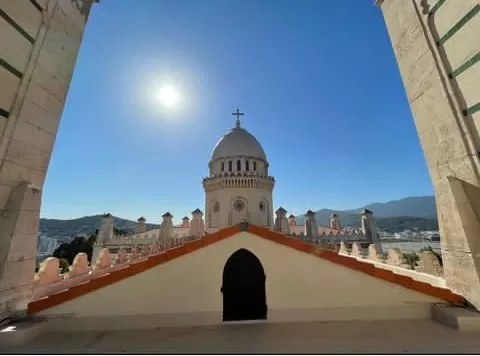
The Basilica of St. Augustine is a magnificent church located in Annaba, a coastal city in northeastern Algeria. Built in the late 19th century, the basilica is an iconic symbol of the city’s rich history and culture. The church is dedicated to St. Augustine, one of the most influential figures in the history of Christianity, who was born in the nearby city of Thagaste.
The Basilica of St. Augustine is one of the largest churches in Africa and is a masterpiece of architectural design. The building is a blend of various styles, including Byzantine, Roman, and Moorish, and features a massive dome, intricate mosaics, and stained-glass windows. The church’s interior is equally impressive, with soaring columns, ornate altars, and beautiful artwork.
The basilica has played an essential role in the religious and cultural history of Annaba. It is a place of worship for the city’s Catholic community and attracts visitors from all over the world who come to admire its impressive architecture and historical significance. The church is also home to a museum that showcases the history of Christianity in Algeria, including artifacts and documents related to St. Augustine.
In addition to its religious significance, the Basilica of St. Augustine is also an important cultural landmark in Algeria. It has been designated as a national monument and is a source of pride for the people of Annaba. The church is an excellent example of Algeria’s rich architectural heritage and serves as a reminder of the country’s diverse cultural history.
5. Qetshawa Mosque
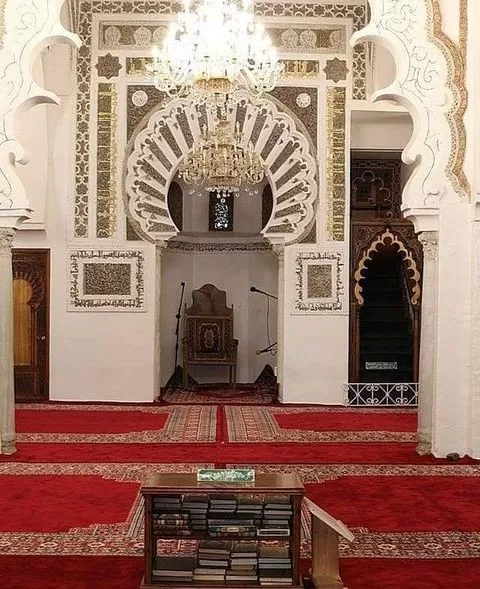
The Qetshawa Mosque is a historic mosque located in the city of Tlemcen, in northwestern Algeria. The mosque was built in the 14th century and is named after its founder, Emir Qetshawa, who ruled Tlemcen during the time of its construction. The mosque is considered one of the most important Islamic monuments in Algeria and is a popular tourist attraction.
The Qetshawa Mosque is a beautiful example of Islamic architecture and features a blend of Andalusian and Moroccan styles. The mosque is built around a central courtyard and features a prayer hall with several domes and minarets. The interior of the mosque is decorated with intricate geometric designs and calligraphy, while the courtyard is adorned with fountains and lush greenery.
The mosque has a rich history and has served as an important center of Islamic learning and worship for centuries. It has been renovated and restored several times over the years, with the most recent restoration taking place in the 1990s. Today, the mosque is still used for daily prayers and is also a popular destination for tourists and history buffs.
The Qetshawa Mosque is not only a significant religious site but also a cultural landmark in Algeria. Its unique architecture and rich history offer visitors a glimpse into the country’s Islamic heritage and its cultural diversity. The mosque is an excellent example of Algeria’s rich architectural heritage and serves as a reminder of the country’s historical and cultural significance.
6. Tlemsen Mosque
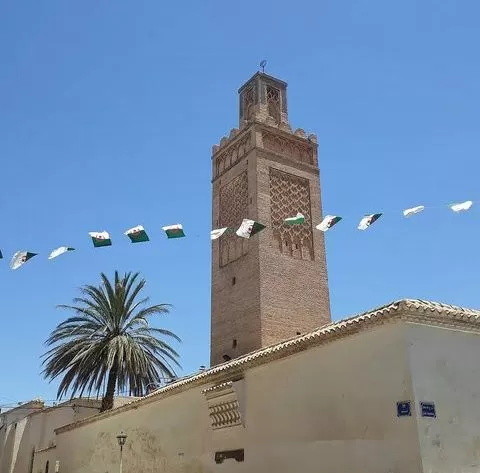
Tlemcen is a city in northwestern Algeria that is known for its rich history and cultural heritage. One of the most famous landmarks in Tlemcen is the Great Mosque of Tlemcen, which is also known as the Tlemsen Mosque. This mosque is considered one of the most beautiful examples of Islamic architecture in Algeria and is a popular tourist attraction.
The Tlemsen Mosque was built in the 12th century during the reign of the Almoravid dynasty, a Berber Muslim dynasty that ruled over the western Maghreb region. The mosque was later renovated and expanded during the reign of the Almohad dynasty in the 13th century. It features a blend of Andalusian, Arab, and Berber architectural styles and is considered a masterpiece of Islamic art and architecture.
The mosque has a rectangular shape and is built around a central courtyard. The courtyard is surrounded by a covered arcade with horseshoe arches and decorative motifs. The main prayer hall is located on the south side of the courtyard and features a large horseshoe arch with intricate geometric patterns. The mosque also has a minaret with a square base and octagonal shaft, topped by a small dome.
The interior of the mosque is decorated with intricate geometric designs and calligraphy, including verses from the Quran. The mihrab, which indicates the direction of Mecca for prayer, is located in the center of the qibla wall, which faces towards the Kaaba in Mecca.
The Tlemsen Mosque is not only a significant religious site but also a cultural landmark in Algeria. Its unique architecture and rich history offer visitors a glimpse into the country’s Islamic heritage and its cultural diversity. The mosque is an excellent example of Algeria’s rich architectural heritage and serves as a reminder of the country’s historical and cultural significance.
7. Monument of Glory and Martyrdom
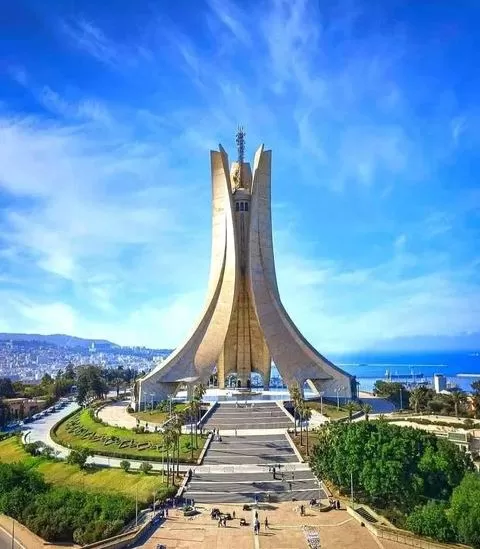
The Monument of Glory and Martyrdom, also known as the Maqam Echahid, is a famous landmark located in Algiers, the capital city of Algeria. The monument was built to commemorate the Algerian War of Independence, which took place from 1954 to 1962 and resulted in the country’s independence from France.
The Monument of Glory and Martyrdom is situated on a hill overlooking Algiers and was inaugurated in 1982. It consists of three palm leaves made of concrete, each representing a stage of Algeria’s struggle for independence. The leaves are positioned in a way that forms a triangle, symbolizing the unity of the Algerian people.
The monument is topped by an impressive bronze sculpture of a man holding a flame, which represents the eternal flame of Algeria’s independence. The sculpture stands at 92 meters (302 feet) tall, making it one of the tallest monuments in Africa.
Visitors can climb to the top of the Monument of Glory and Martyrdom to enjoy panoramic views of Algiers and the surrounding area. The monument also houses a museum that displays photographs and artifacts from Algeria’s independence movement.
The Monument of Glory and Martyrdom serves as a symbol of Algeria’s struggle for independence and its resilience in the face of oppression. It is a place where Algerians come to honor their ancestors who fought for their freedom and to reflect on the country’s history.
In addition to its historical significance, the Monument of Glory and Martyrdom is also an impressive feat of engineering and architecture. Its unique design and towering height make it an iconic landmark in Algiers and a must-see destination for visitors to Algeria.
8. Mzab valley
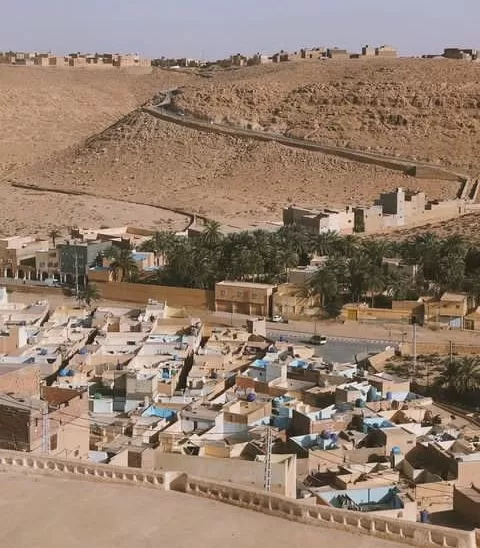
The M’zab Valley is a unique cultural and historical site located in the northern Sahara desert in Algeria. The valley is home to a group of five fortified cities known as the pentapolis, which were built in the 10th century by the Ibadites, a sect of Islam.
The fortified cities of the M’zab Valley are renowned for their unique architecture, which blends Islamic and Berber styles. The cities were designed to provide protection from the harsh desert environment, and their compact layout reflects the communal and social values of the Ibadites.
Each of the five cities in the pentapolis has a specific function, such as trade or religious education. The cities are connected by a network of underground tunnels and channels, which provide a source of water and help to regulate the temperature.
The M’zab Valley is a UNESCO World Heritage Site and attracts visitors from around the world who are interested in its unique architecture, history, and culture. The valley is also home to a vibrant local community that has preserved its traditional way of life, including its language and customs.
Visitors to the M’zab Valley can explore the narrow streets and alleys of the fortified cities, visit the local markets, and learn about the history and culture of the Ibadites. They can also enjoy the natural beauty of the surrounding desert landscape and take part in traditional activities such as camel riding and desert trekking.
The M’zab Valley is a fascinating destination that offers visitors a glimpse into a unique and ancient way of life. It is a testament to the ingenuity and resilience of the Ibadites, who were able to thrive in the harsh desert environment and create a lasting legacy that still inspires awe and admiration today.
9. The Royal Mausoleum of Mauritania
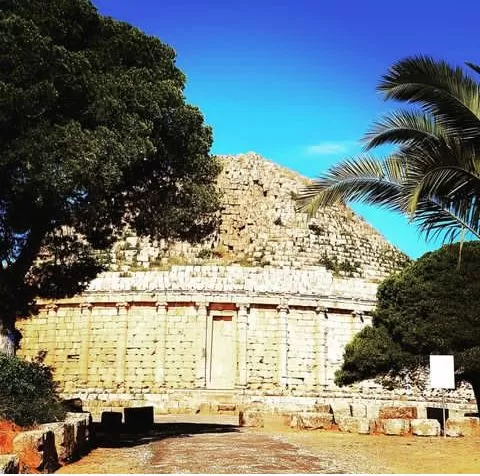
The Royal Mausoleum of Mauritania is a historic site located in Tipaza, Algeria, that dates back to the ancient Roman period. The mausoleum was built in the 3rd century AD as a tomb for the Mauritanian King Juba II and his wife Cleopatra Selene II.
The mausoleum is known for its distinctive architecture, which blends Roman, Greek, and North African styles. The structure features a circular base with a conical roof, and its exterior is adorned with intricate carvings and sculptures.
The interior of the mausoleum is equally impressive, with a central chamber that contains the tombs of King Juba II and Cleopatra Selene II. The chamber is adorned with beautiful mosaics and frescoes that depict scenes from ancient mythology and the lives of the royal couple.
Despite its ancient origins, the Royal Mausoleum of Mauritania has survived remarkably well over the centuries, thanks in part to its sturdy construction and the dry desert climate. Today, it is a popular tourist destination that attracts visitors from around the world who are interested in history and architecture.
In addition to the mausoleum itself, visitors to Tipaza can also explore the nearby archaeological site, which contains the ruins of a Roman city that was once a thriving center of commerce and culture. The site includes a theater, temples, public baths, and other structures that offer a glimpse into life in ancient North Africa.
Overall, the Royal Mausoleum of Mauritania is a fascinating historical site that offers a window into the rich and complex history of Algeria and the broader Mediterranean region. It is a testament to the enduring legacy of the Roman Empire and the many cultures that have influenced this vibrant and diverse part of the world.
10. Tipaza
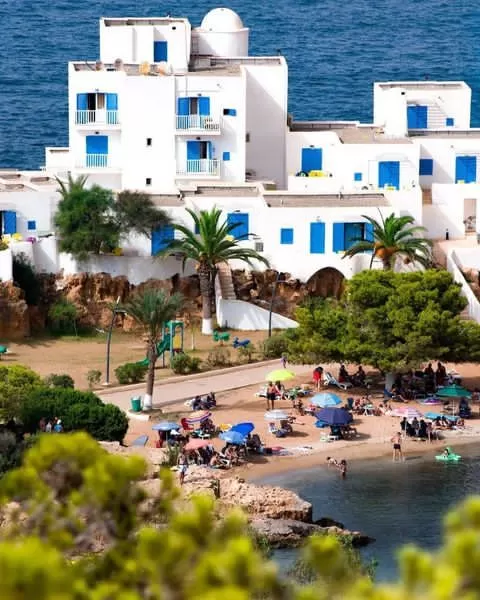
Tipaza is a coastal town in northern Algeria that is known for its rich history and stunning natural beauty. Located on the Mediterranean Sea, Tipaza has been inhabited for thousands of years and was an important center of commerce and culture in ancient times.
One of the main attractions in Tipaza is its well-preserved archaeological site, which contains the ruins of a Roman city that was once a thriving hub of trade and industry. The site includes a theater, temples, public baths, and other structures that offer a fascinating glimpse into life in ancient North Africa.
Another highlight of Tipaza is its stunning natural scenery, which includes rugged cliffs, sandy beaches, and clear blue waters. Visitors can enjoy swimming, snorkeling, and other water activities, as well as hiking and exploring the nearby hills and mountains.
One of the most famous landmarks in Tipaza is the Royal Mausoleum of Mauritania, a historic tomb that dates back to the Roman period. This impressive structure is known for its distinctive architecture and intricate carvings, and is a popular destination for tourists who are interested in history and archaeology.
Other notable sites in Tipaza include the Tomb of the Christian, a well-preserved mausoleum from the 5th century, and the Museum of Tipaza, which houses a collection of artifacts and exhibits related to the town’s rich history and culture.
Overall, Tipaza is a must-visit destination for anyone who is interested in history, archaeology, or natural beauty. Its combination of ancient ruins, stunning scenery, and vibrant culture make it a unique and unforgettable place to explore.
11. The ancient Roman city of Timgad.
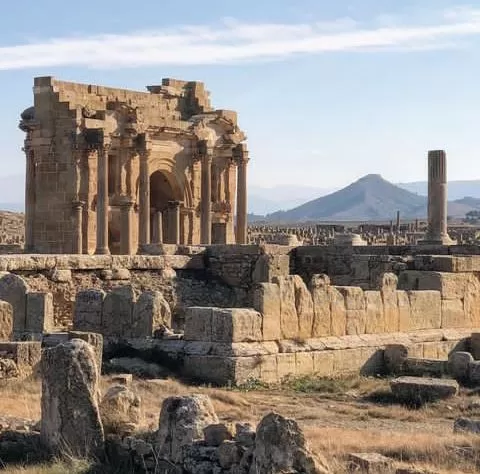
Timgad is an ancient Roman city located in northeastern Algeria. Founded in the first century AD under the rule of Emperor Trajan, the city was designed to serve as a military outpost and trade center for the surrounding region.
Today, Timgad is a popular destination for tourists who are interested in history and archaeology. The city’s well-preserved ruins offer a glimpse into life in ancient North Africa, and its distinctive architecture and design are a testament to the ingenuity and skill of the Roman engineers and builders who constructed it.
One of the most striking features of Timgad is its impressive grid-like layout, which is typical of Roman city planning. The city is divided into regular blocks, with wide avenues and public buildings situated at the center. The city’s most important structures, including the forum, the theater, and the basilica, are located along the main thoroughfares, and offer a fascinating glimpse into Roman civic life.
Other notable sites in Timgad include the Arch of Trajan, a triumphal arch that was erected in honor of the city’s founder, and the Temple of Jupiter, a well-preserved Roman temple that dates back to the second century AD. The city also contains numerous residential buildings, shops, and other structures that provide insight into the daily lives of the city’s inhabitants.
Overall, Timgad is a fascinating and unique destination that offers a glimpse into one of the world’s most powerful and influential civilizations. Its impressive ruins and well-preserved structures are a testament to the enduring legacy of the Roman Empire, and make it a must-see destination for anyone who is interested in history and culture.
12. Qala Beni Hammad
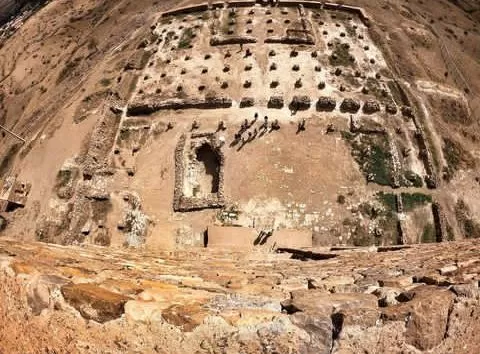
Qala Beni Hammad is an ancient fortified city located in the Hodna Mountains of northern Algeria. The city was founded in the 11th century by the Hammadid dynasty, a Berber kingdom that controlled much of the region during the medieval period.
Today, Qala Beni Hammad is a UNESCO World Heritage Site and a popular destination for tourists who are interested in history and architecture. The city’s impressive ruins offer a glimpse into the wealth and power of the Hammadid dynasty, and its distinctive design and construction are a testament to the ingenuity and skill of the medieval Berber engineers and builders who constructed it.
The city is characterized by its massive walls and fortified towers, which were designed to protect the city’s residents from attacks by invading armies. The walls are up to six meters thick in places and are constructed from local stone, while the towers are strategically positioned to provide maximum visibility and defense.
Within the city, visitors can explore a variety of impressive structures, including a palace, a mosque, and a marketplace. The palace was once the residence of the Hammadid rulers, and features a series of ornate courtyards and chambers that reflect the wealth and luxury of the royal court. The mosque, meanwhile, is an impressive example of medieval Islamic architecture, with a soaring minaret and intricately decorated prayer hall.
Visitors to Qala Beni Hammad can also explore the ruins of a number of residential buildings, which offer insight into the daily lives of the city’s inhabitants. These buildings include multi-story dwellings, public baths, and communal spaces, and offer a fascinating glimpse into the social and economic organization of the medieval Berber society.
Overall, Qala Beni Hammad is a fascinating and unique destination that offers a glimpse into one of the most important periods of North African history. Its impressive ruins and well-preserved structures are a testament to the enduring legacy of the Hammadid dynasty, and make it a must-see destination for anyone who is interested in history and culture.
13. The Sahara Desert
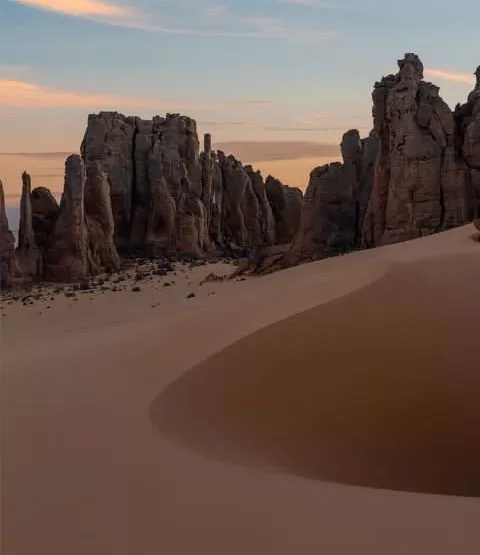
The Sahara Desert is a vast and awe-inspiring expanse of sand that stretches across northern Africa. Covering an area of approximately 3.6 million square miles, it is the largest hot desert in the world and covers much of North Africa, including Algeria. The Sahara Desert is a place of stunning natural beauty, with its sweeping sand dunes, towering mountains, and shimmering oases.
One of the most popular ways to explore the Sahara is by embarking on a desert safari. These safaris can be arranged through tour operators in cities such as Tamanrasset or Timimoun, and typically involve driving or riding on camels through the desert, camping under the stars, and experiencing the unique culture of the region.
Another popular attraction in the Sahara is the Tassili n’Ajjer National Park, located in southeastern Algeria. This park is a UNESCO World Heritage site and is known for its stunning landscapes, ancient rock art, and diverse wildlife, including desert foxes, hyenas, and antelopes.
For those interested in history, the Sahara is home to a number of ancient ruins and archaeological sites. These include the ruins of the city of Garama in Libya, the ancient trading town of Ghadames in Libya, and the ruins of the ancient Roman city of Timgad in Algeria.
Despite the harsh and unforgiving environment of the Sahara, there are a number of oases scattered throughout the desert. These oases are lush and green, and are home to a variety of plant and animal life. One of the most famous oases in the Sahara is the Tuat region, located in central Algeria. This region is known for its picturesque palm groves and stunning architecture, including the impressive Grand Mosque of Tlemcen.
In addition to its natural beauty and historical sites, the Sahara is also home to a vibrant and unique culture. The people who live in the region have adapted to the harsh conditions of the desert, and have developed a rich and diverse culture that is reflected in their art, music, and cuisine. Visitors to the Sahara can experience this culture firsthand by attending a traditional music performance, sampling local delicacies such as couscous and tagine, and shopping for handcrafted goods at local markets.
14. The Atlas Mountains
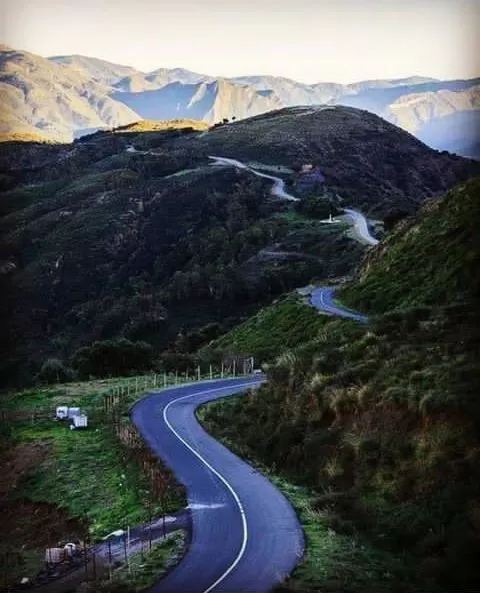
The Atlas Mountains is a majestic mountain range in North Africa, stretching over 2,500 kilometers across Morocco, Algeria, and Tunisia. It is one of the most important natural landmarks of the region, attracting thousands of visitors each year to witness its stunning beauty and unique ecosystem.
The Atlas Mountains consist of three main ranges: the High Atlas, Middle Atlas, and Anti-Atlas. The High Atlas is the highest of the three, reaching a peak height of 4,167 meters at Toubkal, which is the highest mountain in North Africa. The Middle Atlas has a slightly lower altitude, while the Anti-Atlas is the smallest and shortest of the three ranges.
The Atlas Mountains are not only a beautiful natural attraction but also a crucial source of water, minerals, and other natural resources for the surrounding regions. The mountains are home to many rivers and streams, which feed into numerous oases and support the growth of various crops and vegetation.
Moreover, the Atlas Mountains are a popular destination for hikers and adventurers who enjoy trekking through the rugged terrain and exploring the unique flora and fauna of the region. Visitors can hike to the summit of Toubkal, go rock climbing in the Todra Gorge, or take a guided tour of the beautiful Berber villages that are nestled in the foothills of the mountains.
The Berbers are an indigenous people who have lived in the Atlas Mountains for thousands of years, and their culture and traditions are an essential part of the region’s rich history. Visitors can learn about the Berbers’ way of life by visiting local markets and souks, sampling traditional cuisine, and attending cultural events and festivals.
In addition to its natural and cultural attractions, the Atlas Mountains are also home to several ski resorts, making it a popular winter destination for tourists from all over the world. The most popular ski resort in the Atlas Mountains is Oukaimeden, located near Marrakech, which offers a range of ski runs for all levels of skiers and snowboarders.
15. Hammam Meskutin Thermal Springs
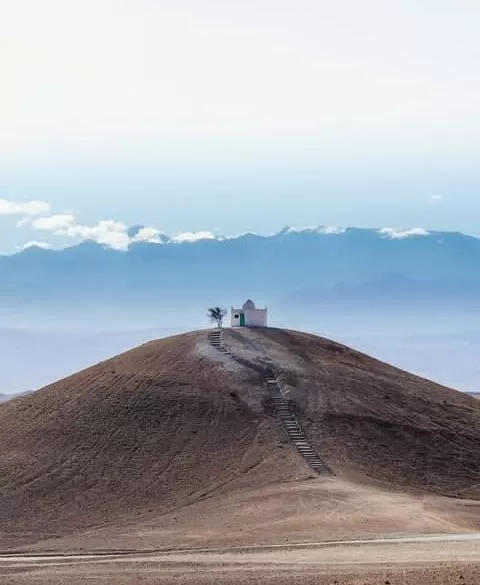
Hammam Meskutin Thermal Springs are a collection of natural hot springs that are located in the Atlas Mountains of Algeria. The water in these thermal springs is heated naturally by geothermal activity and has a mineral content that is believed to have therapeutic benefits. The water is also rich in sulfur, which is known for its healing properties.
Hammam Meskutin Thermal Springs is a destination that offers a unique experience that combines natural beauty, history, and therapeutic benefits. The natural setting of the thermal springs is stunning, surrounded by towering mountains and lush greenery. The water’s therapeutic benefits are also a major attraction for visitors, offering relief for various ailments and promoting relaxation.
here are many activities to enjoy at Hammam Meskutin Thermal Springs, making it an ideal destination for a day trip or a longer stay. Visitors can soak in the warm waters of the thermal springs, which are believed to offer therapeutic benefits. The area is also popular for hiking and trekking, with many scenic trails offering breathtaking views of the surrounding mountains and valleys.
Hammam Meskutin Thermal Springs in Algeria is a natural wonder that offers a unique and rejuvenating experience. The area’s stunning natural beauty, therapeutic benefits, and rich cultural heritage make it an ideal destination for those looking to escape the stresses of everyday life and immerse themselves in nature and culture. So, pack your bags and get ready to experience the beauty of Algeria’s Hammam Meskutin Thermal Springs.
16. The Ahaggar Highlands
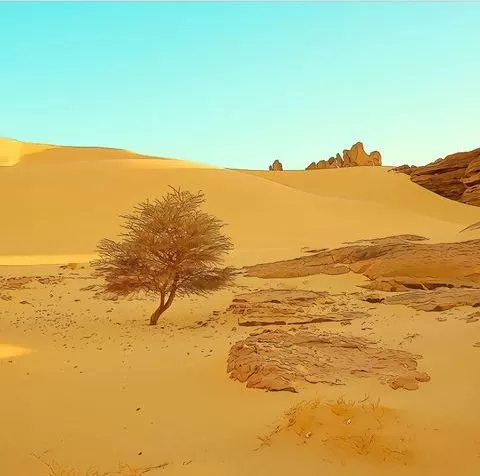
The Ahaggar Highlands, also known as the Hoggar Mountains, are a stunning mountain range located in the heart of the Sahara Desert in southern Algeria. The region is known for its breathtaking landscapes, unique culture, and rich history. If you’re looking for an adventure like no other, the Ahaggar Highlands should definitely be on your bucket list.
The Ahaggar Highlands are a popular destination for adventure seekers and nature enthusiasts. The region is home to several mountain peaks, including the highest peak in Algeria, Mount Tahat, which rises over 2,900 meters above sea level. The rugged terrain, stunning rock formations, and vast stretches of sand dunes make the area perfect for hiking, trekking, and rock climbing.
The Ahaggar Highlands are also home to the Tuareg people, who have lived in the region for centuries. The Tuareg are a nomadic people who are known for their distinctive culture and way of life. Visitors can experience the unique Tuareg culture by visiting one of the many traditional villages in the region, such as Tamanrasset, the largest town in the area.
The Ahaggar Highlands have a rich history that dates back thousands of years. The region is home to several ancient rock art sites, including the Tassili n’Ajjer, which is a UNESCO World Heritage site. The rock art depicts scenes of daily life, hunting, and dancing, providing a fascinating glimpse into the lives of the people who lived in the region thousands of years ago.
The Ahaggar Highlands are home to several natural wonders, including the Tassili n’Ajjer Plateau, which is a vast expanse of sandstone formations and canyons that is breathtaking to behold. The region is also home to several oasis towns, such as Djanet, which offer a refreshing break from the harsh desert environment. Visitors can explore the oasis towns, enjoy the cool shade of palm trees, and take a dip in the refreshing natural pools.
17. Tassilin-Adjer Plateau
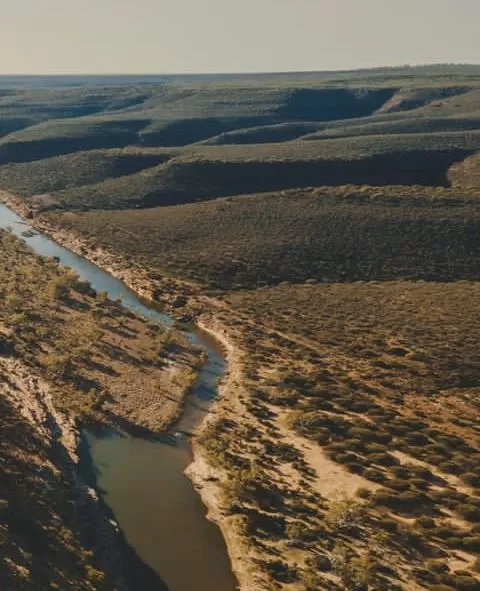
The Tassili n’Ajjer Plateau is a popular destination for hikers, rock climbers, and nature enthusiasts. The region is home to several mountain peaks, including the highest peak in Algeria, Mount Tahat, which rises over 2,900 meters above sea level. The rugged terrain, stunning rock formations, and vast stretches of sand dunes make the area perfect for hiking, trekking, and rock climbing.
The Tassili n’Ajjer Plateau is also known for its ancient rock art, which dates back thousands of years. The rock art depicts scenes of daily life, hunting, and dancing, providing a fascinating glimpse into the lives of the people who lived in the region thousands of years ago. Visitors can explore the rock art sites with a guide and learn about the history and significance of the art.
Despite the harsh desert environment, the Tassili n’Ajjer Plateau is home to a unique ecosystem that has adapted to the extreme conditions. Visitors can see a variety of plants and animals that are found nowhere else in the world, including several species of lizards, snakes, and birds. The region is also home to several oasis towns, such as Djanet, which offer a refreshing break from the harsh desert environment.
18. Jurjur National Park
Jurjur National Park is known for its stunning landscapes and diverse flora and fauna. The park is home to several species of rare and endemic plants and animals, such as the Algerian fir, the Barbary macaque, and the North African leopard. Visitors can explore the park’s natural wonders by hiking through its many trails, which lead to stunning vistas and hidden waterfalls.
Jurjur National Park offers a range of outdoor activities for visitors of all ages. Hiking and trekking are popular activities, with trails ranging from easy to challenging. Visitors can also go camping, birdwatching, and fishing in the park’s pristine lakes and rivers. The park’s beautiful coastline also offers opportunities for swimming, snorkeling, and sunbathing.
19. Fort Santa Cruz
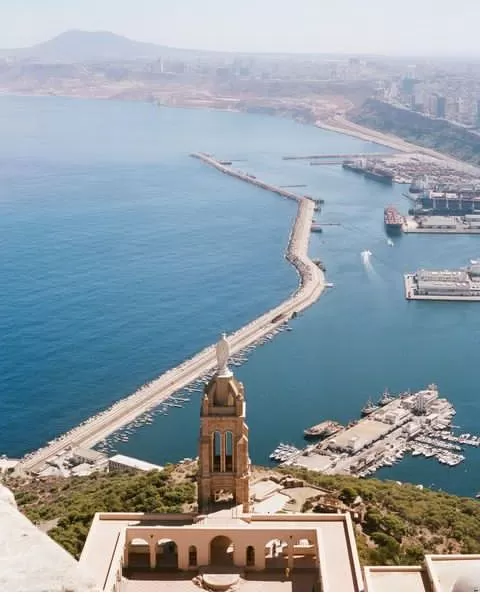
Fort Santa Cruz is a popular tourist attraction that draws visitors from around the world. The fort’s strategic location on a hill overlooking the Mediterranean Sea offers stunning views of the coast and the city of Oran. Visitors can explore the fort’s many rooms and chambers, which are filled with historical artifacts and exhibits. The fort’s walls are adorned with beautiful mosaics and intricate carvings, which showcase the art and architecture of the time.
In addition to the fort itself, visitors can also explore the surrounding gardens, which are filled with beautiful flowers and exotic plants. The gardens offer a tranquil setting for a relaxing stroll or a picnic with friends and family.
20. The ancient Roman city of Jemila
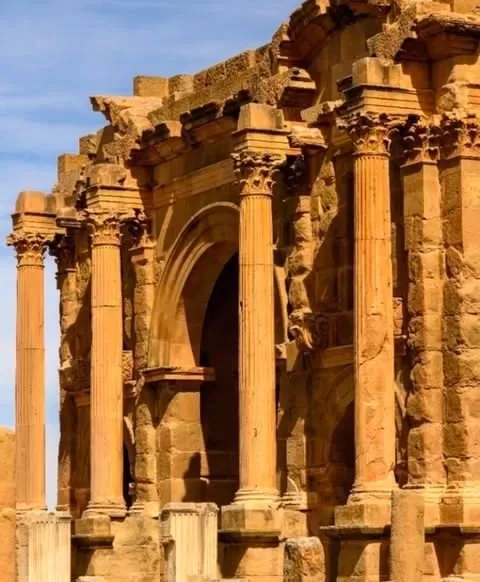
Jemila is a popular destination for visitors to Algeria who are interested in ancient Roman history. The city’s ruins are remarkably well-preserved, and visitors can explore a wide range of structures, including the Arch of Caracalla, the Temple of Venus Genetrix, and the Roman Theater. The city’s central forum is also a must-see attraction, with its stunning marble columns and intricate carvings.
In addition to the city’s ruins, visitors can also explore the surrounding countryside, which is home to some of Algeria’s most beautiful landscapes. The nearby Tassili n’Ajjer mountain range is a popular destination for hikers and nature enthusiasts, and the region is home to a wide variety of flora and fauna.
Thank you for reading this article.
Read also
Algeria Oran; Best Places To Visit As Tourist
Top 20 Destinations For Tourism In Philippines
Tourism In Sri Lanka | 5 Awesome Places For Tourists
Namibia Africa: A Beautiful Destination To Visit
10 Amazing Tourism In Vietnam You Must See
List Of 10 Provinces In Canada With Cities You Must Visit
13 Awesome Places To See With Things To Do In Phuket
15 Best Canada Cities To Visit As Tourist
18 Top Oldest Cities In The World You Must Visit

